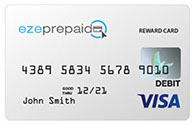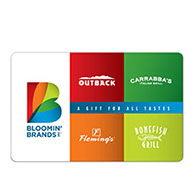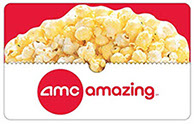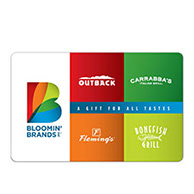How to Maximize the Impact of a Corporate Incentive Program Using Gift Cards
Corporate incentives are a valuable tool for companies looking to motivate and engage their employees. One popular and effective option for incentives is the use of gift cards. Gift cards provide a flexible and convenient way for employees to redeem their rewards, while also providing a cost-effective solution for companies.
Gift cards can be used to maximize the impact of incentives by providing a wide range of options for employees to choose from. Employees can choose to redeem their gift cards at a variety of merchants, including popular retailers, restaurants, and online stores. This flexibility allows employees to select rewards that align with their personal preferences and interests, increasing their motivation and engagement.
Additionally, gift cards can also be used to track and monitor employee spending, allowing companies to gain valuable insights into employee preferences and behavior. This information can be used to tailor future incentives and rewards to better meet the needs of employees.
Overall, gift cards offer a powerful and effective solution for companies looking to create successful incentive programs. They provide a flexible and convenient way for employees to redeem rewards, while also providing valuable data and insights for companies to use in their future incentive’s strategy.
Understanding Gift Cards
Gift cards are a type of prepaid payment card that can be used to purchase goods or services at a specific merchant or merchants. They typically resemble credit or debit cards and are issued by a financial institution or retailer. They can be purchased in a variety of denominations and can be used in-store, online or over the phone depending on the merchant and the terms of the card.
Gift cards differ from cash incentives in that they are redeemable only at specific merchants or retailers. This can provide a more targeted and personalized reward experience for employees, as they can choose to redeem their gift cards at merchants that align with their personal interests and preferences. On the other hand, cash incentives provide more flexibility in terms of usage, but they are often seen as less motivating and engaging for employees.
Prepaid cards, on the other hand, are similar to gift cards in that they are a form of payment that can be used at a specific merchant or group of merchants. However, prepaid cards are typically reloadable, meaning that funds can be added to the card after the initial purchase, whereas gift cards are typically not reloadable. Prepaid cards also typically have a cash value, whereas gift cards are only redeemable for specific goods or services.
Advantages of Using Gift Cards for Corporate Incentives
Gift cards offer several advantages when used as corporate incentives. Some of the key benefits include:
Flexibility in terms of usage and spending: Gift cards provide employees with a wide range of options for redeeming their rewards. This allows employees to choose rewards that align with their personal preferences and interests, increasing their motivation and engagement.
Increased motivation and engagement of employees: Because gift cards offer a personalized reward experience, they can increase employee motivation and engagement. Employees are more likely to feel valued and appreciated when they are able to choose rewards that align with their personal preferences.
Ability to track and monitor employee spending: Companies can use gift cards to track and monitor employee spending, providing valuable insights into employee preferences and behavior. This information can be used to tailor future incentives and rewards to better meet the needs of employees.
Potential for cost savings: Gift cards can be a cost-effective solution for companies, as they can be purchased in bulk at a discounted rate. Additionally, gift cards can also help to reduce administrative costs associated with traditional incentives, such as processing and delivering cash rewards.
Implementing and Managing a Gift Card Incentive Program
Steps for implementing a gift card incentive program:
- Define your program goals and objectives.
- Research gift card providers and select the one that best meets your needs.
- Develop program rules and guidelines
- Communicate the program to all employees.
- Monitor and track employee spending to gain valuable insights.
Tips for managing and maintaining the program:
- Regularly communicate the program details to employees to ensure they are aware of the program and how to participate.
- Keep track of employee redemption rates and adjust the program as needed.
- Keep an eye on the expiration date of the gift cards and remind employees to redeem them before they expire.
Potential challenges and how to address them:
- Low employee participation: This can be addressed by clearly communicating the program details and guidelines and by selecting merchants that align with employee interests and preferences.
- Difficulty in tracking employee spending: This can be addressed by selecting a gift card provider that offers tracking and monitoring tools.
- Difficulty in maintaining program costs: This can be addressed by selecting a gift card provider that offers bulk purchasing options at discounted rates.
In conclusion, gift cards can be a powerful and effective solution for companies looking to create successful incentive programs. They provide a flexible, personalized reward experience that increases employee motivation and engagement, and they can also be used to track and monitor employee spending, providing valuable insights for companies. Additionally, gift cards can also be a cost-effective solution for companies.
A key advantage of gift cards is the flexibility in terms of usage and spending, providing employees with a wide range of options for redeeming their rewards, this allows employees to choose rewards that align with their personal preferences and interests, increasing their motivation and engagement.
When selecting gift cards for a corporate incentive program, companies should consider the merchant options and the expiration date. They should also use the data from employee spending to tailor future incentives and rewards.
Implementing and managing a gift card incentive program can also be challenging, but with clear communication, tracking, and monitoring employee spending, it can be done efficiently.
Overall, companies should consider using gift cards for their incentive programs as they provide a targeted and personalized rewards experience and offer cost savings, flexibility, and tracking options.
In summary, gift cards offer several advantages when used as corporate incentives and can be a powerful and effective solution for companies looking to create successful incentive programs. Companies should consider the above-mentioned factors and tips when implementing their incentive program using gift cards to ensure success.
Contact Sales
Want more information about Ezeprepaid? We're happy to help! We provide quick-to-market prepaid and gift card solutions customized to meet your company’s needs.
"*" indicates required fields
Check out our card offerings













